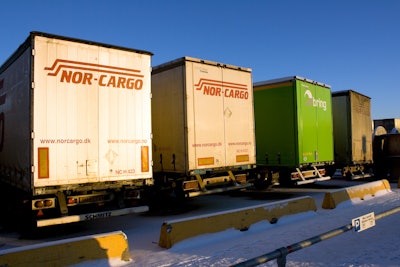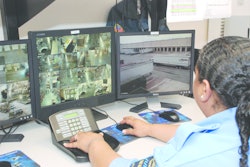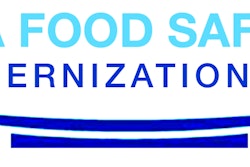
More often than not, cargo theft rises during the holidays, especially around Christmas and Hanukkah, resulting in a spike in prices for retailers and consumers alike. Interestingly, only 21 percent of businesses worry about cargo theft however, according to the 2017 Travelers Risk Index.
But that may very well change soon, as the FBI has recently estimated that cargo theft costs U.S.-based businesses upwards of $30 billion each year. And the most necessary commodities of all—food and beverages—are now a primary target for thieves, leading to concerns in public health among an assortment of other issues. With this in mind, this may very well be the season for food and beverage companies to react to the ever-rising threats by implementing new security measures.
Gone in a Flash—and Without a Trace
In 2007, the United States enjoyed its last year of a booming economy (for the time being, at least). At that time, electronics were the number one stolen commodities in the country, as they were very easy to sell in large quantities. However, three years later, more food and beverage goods were stolen than electronics items—and they have remained the most stolen commodities every year since then.
Last year, cargo theft accounted for $114 million in stolen merchandise, resulting in an average loss value of $206,837. Forty-one percent of these losses involved food and beverages. The likely culprits? For one, unlike electronics and other high value products, food and beverage goods can’t be tracked when they’re stolen, as they lack any bar codes or serial numbers once their packaging is removed. Not to mention, food and beverages can be easily and quickly consumed, leading to little or no evidence left behind. In addition, food and beverages can be sold quickly and for a relatively high profit.
“Cargo thieves are good capitalists. They have to steal things that people will buy,” says Scott Cornell, transportation business lead and crime and theft specialist at Travelers Insurance. “Electronics were no longer as easy to sell once the economy went down, but food and beverages will, of course, always be top sellers.”
Anthony Pelli, supply chain risk consultant for BSI Group, agrees, adding that the easier items are to resell, the easier they are to steal. After all, a bunch of food can be stolen and then sold at a variety of different locations—without anyone noticing or asking any questions—as there aren’t enough security measures in place.
“Some food and beverage products, such as chocolates, lobster and nuts, are high value items, but, unlike electronics or pharmaceuticals, they’re not treated as high value items. We’ve seen these items stolen time after time,” he explains. “The best example of this is a string of nut thefts in California in 2014 and 2015. The pistachio and almond farms out there never expected they would be targeted, so they didn’t have appropriate security in place.”
Security measures can become even scarcer in the midst of natural disasters, which have been detrimental to the food and beverage sector in the southern and western United States.
“Cargo thieves are known to target commodities that can be easily be diverted to alternative markets,” says Scott Martino, director of global intelligence at Sensitech Inc. “Food and beverage shipments fall into this category, particularly following the recent hurricanes in the United States, Puerto Rico and the Caribbean, the earthquakes in Mexico, and the wildfires in northern California.”
He adds, “As these sources become rare, whether because of the direct effects of the disasters themselves or breaks in the supply chain, their value increases, along with the vulnerability of the affected populations, which, unfortunately, creates the environment for theft and exploitation.”
The Worldwide Dangers of Cargo Theft
Let’s face it. Thieves only have bottom line figures in mind when they steal and then sell food and beverages; the health of the people they sell to is far from the most important issue in their minds. They’re certainly not concerned about the timeliness of product delivery (which may lead to temperature fluctuations) or the fact that many consumable shipments are temperature-controlled and require strict adherence to federal guidelines, particularly the Food Safety Modernization Act (FSMA), to ensure they’re safe for consumption.
“They also aren’t worried about keeping the refrigerator unit running consistently and monitoring temperatures,” Cornell says. “They may also let the refrigerator run out of gas and then fill it up a while later, allowing the contents to thaw some and then re-freeze. Health risks will be associated with that issue alone.”
Since the temperatures of food and beverages may not be monitored and can be stored in unsafe conditions prior to being reintroduced into the supply chain, there is no guarantee that the products are kept in sanitary conditions. As a result, food and beverage companies’ brands may be damaged on a short- or long-term basis, and consumers’ health might be in danger—throughout the world.
“I’ve seen examples of cross-channel shipments to the United Kingdom, as stowaways snuck into shipments, that forced companies to get rid of their entire loads,” Pelli states. “And, as food and beverage cargo theft continues to become more popular, I believe there will be even more of an issue for companies to ensure their products aren’t tampered with in the future.”
Aside from the health risks and the potential damage to companies’ marketing capabilities, a lot of food and beverage products are simply difficult to reproduce, as farmers must work all year just to sell their products once or twice.
“Stolen goods cause a ripple effect all around the world, as they lead to a shortage, which then costs a lot of money and, of course, results in a rise in prices,” Cornell explains.
“It’s truly a global problem, as other countries have a much more serious risk than the United States. For example, in Brazil, hijackings involving soybeans or corn often occur, while there are frequent thefts of salmon in Chile,” Pelli adds. “In Europe, we see major thefts of items like champagne in France and chocolates and cheeses in Italy, Germany and Spain. Without question, no country is safe from the ever-increasingly problematic issue of food and beverage cargo theft.”
Mitigate the Risk of Theft
Once food and beverages are stolen, shippers and manufacturers can’t really do much to solve—or even reduce the risks and consequences of—the issue. From broken seals to variance in temperatures, the products are truly out of their control. All that food and beverage companies can do is notify the public, communicate risk to their transportation providers and make sure their providers are prepared for potential thefts (and the consequences of them).
“Companies must work closely with their logistics providers and prioritize their security. If manufacturers create these types of commodities, they shouldn’t only put language in contracts—they must also help facilitate security plans and protocols,” Cornell says. “The more that shippers and manufacturers become involved, the better off they (and their customers) will be.”
Pelli also advises manufacturers to ensure their transportation providers don’t stop within 300 miles of origin sites, and that they provide clear instructions to drivers on security as two potential means of avoiding theft while they’re in transit. Manufacturers can also use seals to know if tampering has occurred, utilize devices that can monitor temperature and determine whether or not they need to implement more sophisticated security measures—and who they should hire to do so.
“Manufacturers need to know their business partners and who’s picking up the loads, and then educate them,” Pelli states. “They should start with transportation providers who are doing refrigerated transport or are transporting their most critical products, and then work with them for increased security.”
To further mitigate the risk of theft, Martino also believes shippers should fortify their supply chains with layered security programs, which consist of, but are not limited to, physical security at warehouse locations, security procedures built into their organizational cultures and visibility technology that tracks cargo in real-time.
“Some security programs now apply the latest real-time sensor technology directly to the cargo and constantly monitor the location and condition of that cargo throughout the supply chain,” Martino says. “If problems arise or procedures are not properly followed, the programs take immediate action. And, of equal importance, they also provide detailed, post-shipment performance reporting to prevent similar problems in future shipments, which is crucial as the threat of thefts will likely continue to rise.”
















